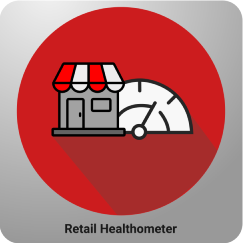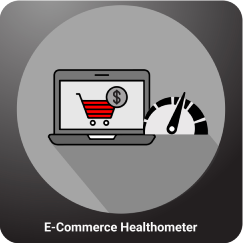What is eCommerce Demand Research?
Imagine that a businesswoman from South Africa wants to sell her beauty and personal care products in the GCC market via the eCommerce route. But she is not sure which regional market in the GCC she should target. The selected market must meet the required demand volumes and the market share she expects her brand to capture. Demand analysis can provide her answers to these questions.
Ecommerce demand research is ascertaining the demand levels of a product category and its variants in a market/region with an emphasis on the online behaviour of customers. From the example used above, remember that the businesswoman does not have a presence in the GCC market. She does not possess any business data of her own to carry out demand analysis. Therefore, she is reliant on external data for demand research.
In this blog on online market research, we shall examine the important elements of demand analysis for eCommerce. The focus will be on drawing and deducing conclusive materials for business decision-making.
Drawing Insights from eCommerce Demand Research
Demand analysis is not an alien term. But before carrying out a demand analysis, the objectives must be put forth. These objectives determine what we want in the outcome i.e. research reports. The second prerogative is to be able to analyse and read these reports accurately and relevantly.
Product Category Demand Analysis
The product category demand analysis is a reflection of how products within a particular category are sought by people in one or more regions. This is based on curated search volumes. It gives clues as to the overall demand sentiments for a product/product category. For example, the demand for umbrellas and raincoats is higher in regions that receive relatively more rainfall than in rain-scanty regions. The visual below shows the search volumes of beauty and personal care products in four GCC countries. These numbers may not immediately translate into demand but provide strong clues for further planning, formulation, and decision-making.
From the chart, it could be easily read that the UAE has the largest search volumes for beauty and personal care products and Kuwait with the lowest among the four countries. This gives some macro answers. Should you target the UAE market or Kuwait? These are simple statistics but significant enough to steer the course of your business. And if you select a market from this data for further evaluation, it also gives you the numbers that help you decide if the market is big enough for venturing into. Of course, you cannot determine the micro aspects from this data set alone. This data is a composite of all the products in the beauty and personal care product category. You may be dealing in a product type (say skincare) that has very low popularity in these countries. The next data point will provide you further with insights into the market demand.
Product Type Demand Analysis
In Product Type Demand Analysis, we take into consideration the demand search popularity of the different product types. This analysis is specifically useful for businesses with deep and wide product mixes. The data gives them enough insights to formulate their product-market strategies. However, if they are aiming for niche-building or targeting an intensely competitive market, further research becomes necessary. Coming back, the chart below shows the search analysis of ten product types (including skincare) in the four GCC countries.
Because you are dealing with skincare products, it is natural for you to notice that the UAE has again emerged as a promising market. The country has the highest search volumes for skincare products beating the other three states. But even within skincare products, there could be many subtypes. Let us say that your lifting & firming product has a strong value proposition for the Middle East region that made you turn towards it. But from this data set alone, the popularity of lifting & firming products could not be ascertained. For instance, Kuwait has a search volume of 2730 for skincare products and the same figure for Saudi Arabia is 10,000. Does it mean Saudi Arabia is a better market for your business? These numbers do not shed light on the popularity of the product subtypes under skincare. And in your case, you cannot precisely gauge the popularity of lifting & firming products in the given countries from this data. But the next set of data would be much more conclusive.
Product Subtype Demand Analysis
Product subtype demand analysis is the data filter set that shows the demand search popularity of a particular subtype of product within a product type. The visual below shows the break-up of the search volume data of the lifting & firming product across the four GCC countries.
If you look at the data on “lifting & firming” product, you can see that Qatar has the highest search volume. If you had considered only the Product Category Demand Analysis or Product Type Demand Analysis, you might have mistakenly concluded that the UAE is your best market because it has the highest search volumes for beauty and personal care products. But because of the Product Subtype Demand Analysis, now you know that your “lifting & firming” product has higher chances of success in Qatar. Similarly, if there is a face-peeling product in your product mix, then Saudi Arabia would be your ideal target market.
The statistics from product subtype demand analysis also help businesses shape many of their strategies and decisions. Once the demand cues are available, it becomes easier to ascertain the direction of the decisions pertaining to distribution, inventory allocation, warehousing, team structuring, digital marketing efforts, etc. For example, if the search volumes are less than 100 in a given period, for such quantities, you may consider hiring 3PL services instead of having a fulfilment setup of your own. Also, in this case, your digital marketing has to be more focused because the size of the audience is small.
Per Capita Spend Analysis
Even though search volume-based demand analysis is a good indicator of market potential, it cannot be directly construed that search necessarily leads to purchase. Demand analysis followed by purchase/spend analysis is a more confidence-boosting measure in eCommerce demand research. Given below are the statistics for average per capita eCommerce spending per year in the four GCC countries.
Continuing from the previous analyses where Qatar emerged as the best market for lifting & firming products, we will carry forward the assessment with these points in focus. Like in most of the macro parameters, the UAE has the highest per capita spending on eCommerce followed by Qatar, Saudi Arabia, and Kuwait. Although Qatar has a better per capita income than UAE the latter outperforms Qatar when it comes to per capita eCommerce spending. One plausible reason for this is that the UAE’s eCommerce market is many times larger than that of Qatar. In terms of population, Qatar is only a third of the UAE and a tenth of Saudi Arabia. Qatar appears to be a relatively smaller market but consumers here exhibit strong spending habits – second to the UAE. The demand volumes are likely to remain relatively low. But it is a good market entry point with the need for long-term focus on the markets in the UAE and Kuwait. For considering Saudi Arabia, a lot will depend on further demand research going into the future.
The potential of a market is reflected in its demand levels. And the demand levels are reflected in the existing and predictable consumer behaviour. For an eCommerce brand, an important element of this consumer behaviour is search analytics. In this blog, we saw how search-based demand assessment can help eCommerce businesses zero in on evaluating a target market using the right eCommerce market research tools and methodologies. Demand research combined with consumer research and competitor research can provide extensive details and insights into a market. These insights help eCommerce businesses in market evaluation and selection, market entry and other marketing strategies.
Found this blog worth Reading?
If you liked this blog, please visit our blog section and YouTube channel for regular updates and insights on the retail and eCommerce industry.







